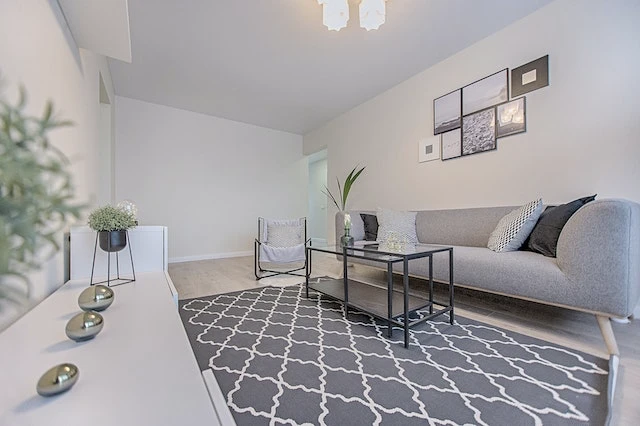How to Choose the Right Homeowners Insurance Policy for Your Needs?
Homeowners insurance is not just a financial safeguard; it's a fundamental aspect of responsible home ownership. As a homeowner, your property is one of your most significant investments, and protecting it against unexpected disasters or damages is paramount. In this comprehensive guide, we will delve into the critical considerations for selecting the right homeowners insurance policy that suits your unique needs and circumstances.

The article is structured to provide you with a step-by-step roadmap to navigate the complex terrain of homeowners insurance. We'll start by emphasizing the vital importance of homeowners insurance in safeguarding your home, personal belongings, and financial security. Then, we'll outline the purpose and structure of this guide, which is designed to empower you with the knowledge and tools necessary to make an informed decision regarding your homeowners insurance coverage. Whether you're a first-time homebuyer or a seasoned homeowner looking to reassess your coverage, this article will equip you with the insights and strategies needed to choose the optimal policy.
Assessing Your Insurance Needs
One of the foundational steps in choosing the right homeowners insurance policy is to assess the value of your property and its replacement cost. This involves conducting a detailed evaluation of your home's structural components, including its square footage, materials used, and any unique features that may affect replacement costs. For instance, if your home boasts custom woodwork or energy-efficient installations, these should be factored into your assessment. Utilizing tools like property value calculators and consulting with real estate professionals can aid in arriving at an accurate estimate.
One of the foundational steps in choosing the right homeowners insurance policy is to assess the value of your property and its replacement cost.
Identifying specific coverage needs is another crucial aspect. Depending on your geographical location, you might be more susceptible to certain risks like wildfires, hurricanes, or flooding. Consider your property's vulnerability to these natural disasters and any regional trends. Likewise, assess your area's crime rate and evaluate the need for coverage against theft or vandalism. This section will delve into how to tailor your policy to match your property's unique risks, ensuring comprehensive protection.
Beyond property protection, it's vital to think about personal liability coverage. Accidents can happen on your property, and if you're found liable for injuries or property damage, the financial consequences can be substantial. We'll provide insights into assessing your liability risks and deciding on an appropriate level of coverage.
Types of Homeowners Insurance Policies
Homeowners insurance policies come in various forms, each denoted by an HO (Homeowners) number. Understanding the distinctions between these policies is essential for making an informed choice.
There are various types of homeowners insurance policies, typically denoted as HO-1 to HO-6. Each policy offers a different level of coverage, so it's crucial to grasp their distinctions:
HO-1: This is a basic policy that covers specific perils like fire, theft, vandalism, and some natural disasters. It's a minimal level of coverage and is rarely offered today.
HO-2: Often referred to as a "broad form" policy, HO-2 provides coverage for a broader range of perils than HO-1. It usually includes protection against more natural disasters and additional risks.
HO-3: This is the most common policy for homeowners. HO-3 offers comprehensive coverage for your dwelling and personal property, protecting you against all perils unless they're explicitly excluded in the policy.
HO-4: Known as renters insurance, HO-4 is designed for tenants. It covers personal property against perils and provides liability protection but doesn't include coverage for the structure itself.
HO-5: Often called a "comprehensive form," HO-5 offers broader coverage than HO-3. It provides more extensive protection for personal property and the structure.
HO-6: HO-6 is tailored for condominium owners. It covers personal property and certain parts of the structure not covered by the condo association's master policy.
Understanding these policy types and their differences is essential when selecting the right homeowners insurance for your specific needs. Each policy offers varying levels of protection, so it's crucial to assess your circumstances and choose one that provides the coverage you require.
Each policy offers varying levels of protection, so it's crucial to assess your circumstances and choose one that provides the coverage you require.
Factors to Consider When Choosing
Choosing the right homeowners insurance policy involves careful consideration of several critical factors that directly impact your coverage and costs. Here are the key elements to keep in mind:
Deductible Options: Your deductible is the amount you're responsible for paying before your insurance coverage kicks in. Higher deductibles typically result in lower premiums, while lower deductibles mean higher premiums. Consider your financial situation and how much you're comfortable paying out of pocket in the event of a claim. Finding the right balance between your deductible and premium can be crucial in managing your insurance costs.
Understanding Coverage Limits and Endorsements: Homeowners insurance policies come with coverage limits that specify the maximum amount your insurer will pay for certain types of losses. It's essential to understand these limits and whether they align with the value of your property and belongings. Additionally, endorsements, also known as riders, can be added to your policy to extend or customize coverage. For example, if you have high-value jewelry or collectibles, you might need a valuable items endorsement to ensure they're adequately protected.
The Role of Your Home's Location: Your home's location significantly influences your insurance rates. Homes in areas prone to natural disasters, such as hurricanes or earthquakes, may have higher premiums due to increased risk. Conversely, homes in safe neighborhoods with low crime rates may benefit from lower insurance costs. When selecting a homeowners insurance policy, consider the geographical factors that affect your property and research how they impact your premiums. This knowledge will help you make an informed decision while keeping your budget in check.
Comparing Insurance Providers
When choosing the right homeowners insurance policy, it's crucial to evaluate different insurance providers thoroughly. Here are the essential steps in comparing insurance companies:
When choosing the right homeowners insurance policy, it's crucial to evaluate different insurance providers thoroughly.
Researching Reputable Insurance Companies: Start your search by identifying well-established and reputable insurance companies. Look for insurers with a strong financial standing, as this is an indicator of their ability to fulfill claims. You can check financial ratings from agencies like A.M. Best, Moody's, or Standard & Poor's. Additionally, consider whether the company specializes in homeowners insurance or offers a broader range of insurance products. A dedicated homeowners insurance provider may have a deeper understanding of your specific needs.
Obtaining Multiple Quotes for Cost Comparison: Don't settle for the first quote you receive. Request quotes from multiple insurance providers to compare costs and coverage options. Each insurer may offer different rates for the same coverage, so shopping around can help you find the most cost-effective policy. Be prepared to provide accurate information about your home, including its age, location, safety features, and any recent renovations. This ensures that the quotes you receive are based on the same details, allowing for a meaningful comparison.
Assessing Customer Reviews and Satisfaction: Beyond financial stability and pricing, it's essential to gauge the overall customer experience with an insurance company. Reading customer reviews and satisfaction ratings can provide valuable insights into an insurer's reputation for service. Look for feedback on claim handling, responsiveness, and communication. A company with a history of prompt and fair claims processing can make a significant difference in your peace of mind as a policyholder. Keep in mind that customer satisfaction can vary, so consider the consensus among multiple reviews rather than individual opinions.
Reading the Policy Fine Print
As you approach the critical phase of selecting the right homeowners insurance policy, you must delve into the intricate details of the policy documents. This entails thoroughly understanding the policy's terms and conditions. While it may seem daunting, this step is essential to avoid surprises in the event of a claim.
Firstly, scrutinize the terms and conditions. Pay close attention to the fine print, especially when it comes to specific coverage areas. Understand what is explicitly covered, such as damages from fires or theft, and what isn't covered. It's in these details where you may find variations between policies that could significantly impact your protection in the long run.
Furthermore, be vigilant about exclusions and limitations. These are the scenarios or circumstances in which your policy may not apply or may have reduced coverage. For example, some policies might not cover flood damage or may have restrictions on coverage for high-value items like jewelry. By familiarizing yourself with these clauses, you can make informed decisions about whether to seek additional coverage or make adjustments to your policy. Reading the fine print might be time-consuming, but it's an essential step in securing the right homeowners insurance.
Customizing Your Policy
Your home is unique, and so are your insurance needs. A crucial aspect of selecting the right homeowners insurance policy is customization. This step allows you to tailor your coverage to match your specific requirements.
A crucial aspect of selecting the right homeowners insurance policy is customization.
Firstly, consider adding optional coverage as needed. While standard homeowners insurance policies cover a range of perils, there may be specific risks associated with your location or circumstances that require extra protection. For example, if you live in an area prone to earthquakes, you might want to add earthquake insurance. Similarly, if you have a home office, you might need additional coverage for your business equipment.
Secondly, ensure coverage for valuable personal belongings. Most standard policies include coverage for personal property, but there are often limits, especially for high-value items like jewelry, art, or electronics. You can customize your policy to increase coverage for these items, ensuring they are adequately protected in case of loss or damage.
Lastly, discuss policy riders and endorsements. These are additional provisions that can be added to your policy to cover specific situations or assets. For instance, you might want to consider a water backup endorsement if your basement is prone to flooding, or a home business endorsement if you operate a business from your residence. By carefully customizing your policy, you can be sure that it aligns precisely with your unique homeowners insurance needs.
Reviewing and Updating Your Policy
Once you've chosen a homeowners insurance policy that suits your needs, the journey doesn't end there. It's essential to regularly review and update your policy to ensure it continues to provide the necessary protection.
Firstly, make it a habit to assess your coverage needs periodically. Life circumstances can change, and so can your insurance requirements. For instance, if you've recently renovated your home, its value might have increased, necessitating an adjustment in your coverage limits. Likewise, if you've acquired valuable possessions, you may need to increase coverage for personal property.
Secondly, be prepared to make necessary adjustments to your policy. If your assessment reveals changes in your coverage needs, contact your insurance provider to discuss these changes. They can help you modify your policy to reflect your current circumstances accurately.
Lastly, stay informed about policy changes and updates. Insurance regulations and coverage options can evolve over time. Regularly communicating with your insurance provider and reviewing your policy ensures you're aware of any modifications that might affect your coverage. By actively managing your homeowners insurance policy, you can rest easy knowing that your protection aligns with your changing needs and circumstances.
Conclusion
In this comprehensive guide, we've walked you through the essential steps to select the right homeowners insurance policy. We've highlighted the significance of homeowners insurance, ensuring your property and financial well-being are safeguarded against unexpected events. Throughout the article, we've discussed factors such as assessing your insurance needs, policy types, factors to consider, and customizing coverage to fit your specific situation.
We encourage you to take proactive steps in securing your financial protection. By making informed decisions about your homeowners insurance, you can find the policy that aligns with your unique circumstances. Regularly reviewing and updating your coverage, as well as staying informed about policy changes, will ensure that your insurance continues to meet your evolving needs. With the right homeowners insurance policy in place, you can have peace of mind, knowing that your home and possessions are well-protected, whatever life may bring.
Looking for local agents?
Search, compare and connect with top-ranked agents. Find the best local agent & lower rates.



